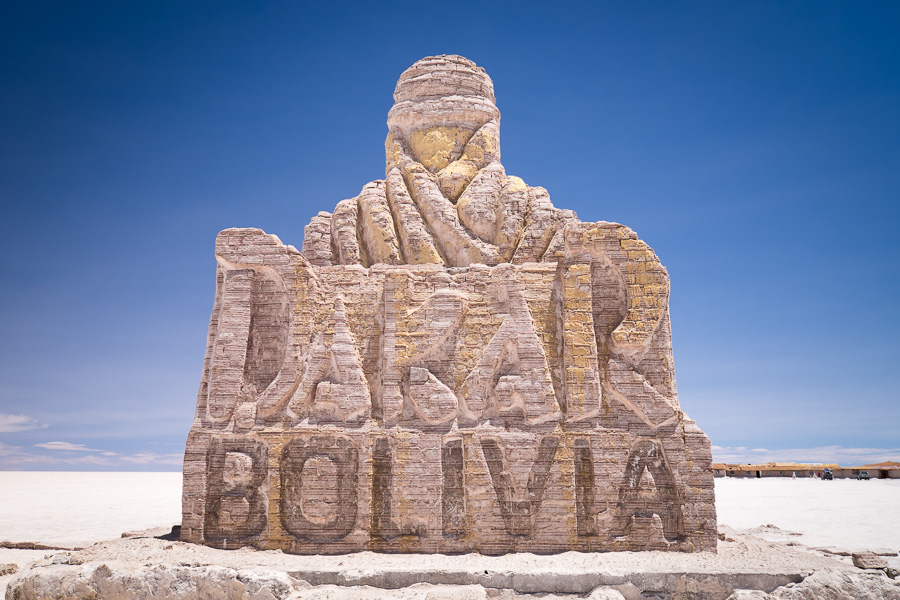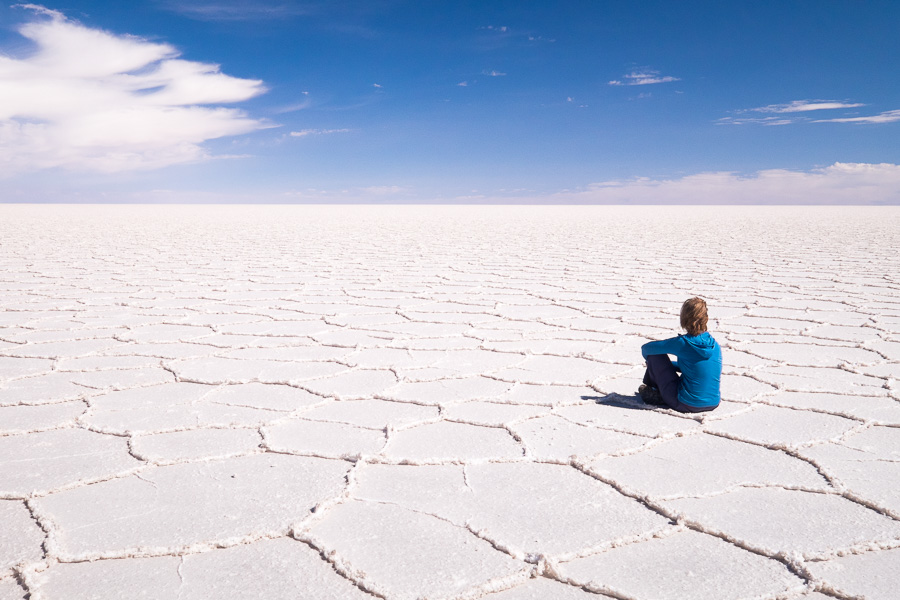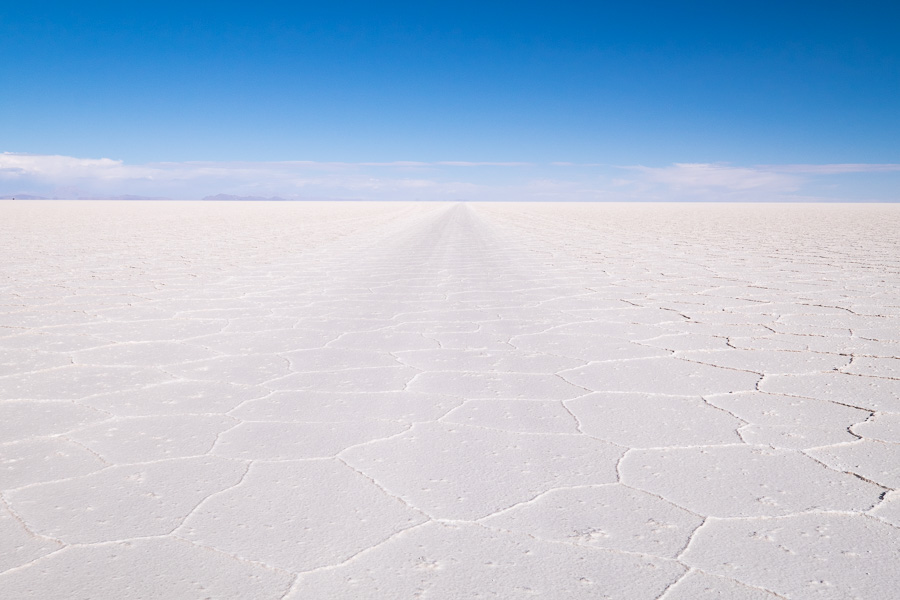Ask me what are the top 3 things I’ve ever seen in my life up until now and I’ll tell you:
- a total solar eclipse (from Ceduna in 2002)
- Comet Hyakutake (from Siding Springs Observatory in 1996)
- the Salar de Uyuni in Bolivia when it was full of water (May 2001)
This last was a 4 day trip I did with 5 other astronomer friends out of San Pedro de Atacama, back in the days when this was a relatively unexplored part of the world and few travelers knew about it.
I remember it being absolutely freezing (we all made a pact to not shower for the 4 days because the facilities were very basic and there was no hot water) and that I had never, ever seen anything like the perfect reflections we experienced there. My strongest memory is looking out the front windscreen of the car as we were driving towards an island, and not being able to see a horizon line. At all! The sky was absolutely clear, the “road” was so smooth, and the reflection was so perfect, that it felt more like we were in the cockpit of an aeroplane flying towards a perfectly symmetrical island floating in the sky. I will never forget that totally surreal feeling!
One of the few concrete plans I made for my trip this year was that I was going to re-visit the Salar de Uyuni and cross the border from Bolivia into Chile via that route. I was really curious to see the Salar when it was dry and, given it is such a beautiful area, I was keen to revisit it now that I’m a better photographer 🙂
Turns out, these days, every man and their dog offers trips to the Salar de Uyuni. However, given that most do 3 day trips, I of course, wanted to do something a little different so managed to round up some other travelers to get the requisite 4 person minimum to arrange a 4 day tour with Salty Desert Adventures. I actually wanted to do the 5 day from Tupiza – but the timing just didn’t quite work for me. Oh well, next time 🙂
We started out from Uyuni at 10am to first visit the “train graveyard” just outside of town. It was OK – but it was crawling (literally) with people, and 10:30am is not the best time of day for photography…

From there we headed out towards the Salar itself, stopping waaaay too long at Colchane to see if we could be tempted to buy the standard tourist trinkets and have a quick demonstration (literally 3 minutes) of how they process the salt. Essentially, they shovel it onto a large BBQ, light a fire underneath to dry it out, add iodine to it, and then package it up into plastic bags which are sealed by a rather over-the-top flame coming directly out of a gas bottle!

Next stop was a place where they were actually “mining” (though “collecting” might be more accurate) the salt crystals. Salt that has been previously lifted was piled into small mounds, and this was being loaded into a truck when we visited. Unfortunately all work stopped and everyone (except the dog) disappeared when we showed up.

Next up was the salt museum with the massive Dakar monument (and a Toyota Hilux monument) made out of salt in front of it. Yes – since they moved the Dakar rally to South America – it come through this part of Bolivia on several occasions.

The salt museum used to be the really fancy (and only) salt Hotel back in 2001, but it had to abandon operations when the government decreed that their could be no hotels on the Salar itself. It is certainly a lot more worn than I remember it being and is now used as a lunch shelter for all the tour groups with some more salt statues inside and out.

After lunch we visited a different part of the Salar where the salt cap was thicker and they extract the salt bricks that are used to construct the now large numbers of salt hotels in the area.

And then spent a few hours in an area that was completely untrammeled and pristine with the large hexagon formations that are so typical of the Salar when it is dry. These are formed by Rayleigh–Bénard convection as the water that falls during the rainy season evaporates.

It was an awesome place to sit quietly and just contemplate.

Though my companions were busy creating perspective photos in the background 🙂

One of my pet peeves in places like this (and the Atacama desert in general) is that people drive off tracks that are already formed to create new ones – and for no good reason. These tracks tend to remain for a long time, given there is not much around to erase them, and they mar the otherwise beautiful landscape. My feeling is that if there is a track already there, you should be trying to follow it as closely as possible so that the landscape remains pristine.

The end of the first day saw us arrive at the small town of Coqueza which sits at the base of the Tunupa Volcano. After an afternoon tea of, well, tea, along with too many biscuits, I headed off to watch the sunset on the Salar and found lots of flamingo friends 🙂

Absolutely stunning!